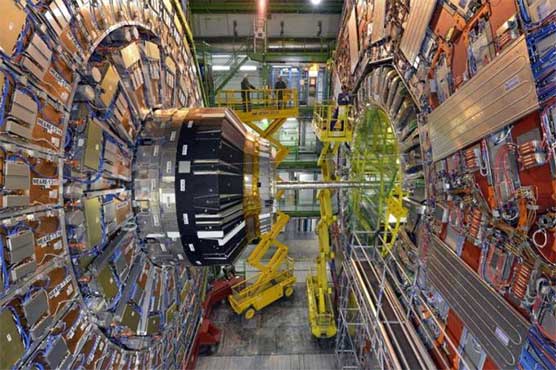China to start work on super, super-collider by 2020: report

The facility will reportedly be at least twice the size of the Swiss-based CERN.
BEIJING (AFP) - China will begin work on the world s largest super-collider in 2020, state-run media reported Thursday, in an attempt to increase understanding of the Higgs boson, or "god particle".
The facility, designed to smash subatomic particles together at enormous speed, will reportedly be at least twice the size of the Swiss-based CERN, where the Higgs boson was discovered.
Scientists believe the particle is one of the fundamental building blocks of the universe.
The final concept design for the project is on schedule to be completed by the end of next year, Wang Yifang, director of the Institute of High Energy Physics at the China Academy of Sciences, told the China Daily.
The facility is expected to generate millions of Higgs boson particles, far more than the capacity of Europe s Large Hadron Collider (LHC), helping scientists to answer some fundamental questions about how the universe works.
As planned, the Chinese project will generate seven times the energy of the LHC, colliding electrons and protons at super high speeds to generate the elusive particles on an unprecedented scale.
"LHC is hitting its limits of energy level," Wang told the China Daily, which is published by the government. "It seems not possible to escalate the energy dramatically at the existing facility."
At a time when austerity measures have led many developed nations to reduce research funding for projects without clear applications, China is pouring huge sums money into theoretical as well as practical science, hoping to become a world leader in fields from biology to cosmology.
Planning for the project began in 2013, shortly after the 2012 discovery of the Higgs boson, according to slides from a presentation by Wang in Geneva that appeared on his institute s website.
He suggested Qinhuangdao, a northern port city that is the starting point of the Great Wall, as an ideal location for the underground facility, noting its favourable geological conditions and local wineries as important selling points.
China s rapid economic growth and large population put it in a unique position to invest in basic scientific research, he wrote.
"This is a machine for the world and by the world: not a Chinese one," he added, noting that physicists from around the globe had travelled to China to help with the project.

